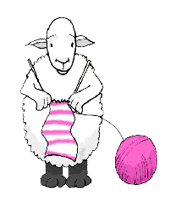 It is amazing how quickly you learn things about animals, about their needs, their temperaments, and I think just as importantly what they can do for you. Keeping any animal requires a great deal of your time, and energy, and can involve a huge expense (ask the last person you know that went to a vets!) which is why you need take extra care at the very beginning when you first buy your stock. It is amazing how quickly you learn things about animals, about their needs, their temperaments, and I think just as importantly what they can do for you. Keeping any animal requires a great deal of your time, and energy, and can involve a huge expense (ask the last person you know that went to a vets!) which is why you need take extra care at the very beginning when you first buy your stock.
Having been asked several times what should I look for when buying stock, people seem surprised when I say Choosing a Breed | How many for your land |Age to Buy|What to inspect Choosing a BreedFor fattening you should probably look towards the bigger breeds perhaps the Suffolk although I am slightly biased here! For wool crafts I am lead to believe the Jacobs produce fine wool of differing colours. For grass cutters well crossbreed anything as long as they are kept healthy shoul One other thing to consider about breed is that some have horns and some don’t, think about whether this will rule certain breeds out! Ram or ewe? Personally having looked after 2 rams with no problems at all I would still never take my eyes off of either of them however cute they look. Stories of broken bones (of the human kind) are very common, when asking farmers about why you shouldn’t keep rams. How Many for your landHow many? Around where I live 10 to an acre maximum is the average, although personally I have 8 ewes rotating on 2 acres. This means that I always have an acre `at rest’ and growing. This is also beneficial in controlling worms in that once wormed the ewes are taken onto fresh grass after 36hrs ish leaving the worms on the old grass to die. Flushing is also possible and basically means that when breeding time is near you leave the ewes on the poor grass, then introduce the ram and allow them all onto the good pasture. The ewes think wow these are good conditions lets get pregnant! Flushing is also thought by some to increase the likelihood of twins and triplets. Similar techniques are seen throughout the animal world during breeding times. At which age to BuyGiven the choice of poor orphan lambs that needs feeding by the bottle, or the 3-year-old ewes that have been around the block, what would you choose to buy? The romantic view of bottle-feeding orphaned lambs is entrenched in our minds. That is until you actually experience it! Consider why farmers want to sell them so badly or often will give them away (unless pure bred). They are so time consuming and need a sheep version of intensive care for a number of weeks, not to mention the financial costs. They often need tube fed for a few days, injections, and then bottle-feeding. The costs just keep rising. If you are planning to sell them as fatteners you are losing money straight away. On the other hand a 2-3 year old ewe will have more or less worn the T-shirt so to speak. They are quite resilient having lived in all weather conditions probably lambed a few times, and are used to being handled this does not mean they will co-operate of course. Buying ewes will also hopefully make your first experience a pleasurable one, rather than a stressful one tending sickly lambs which can very often die whatever care you give them! What to inspect?TeethTeeth play an important part in determining the age of a sheep. Within the first year they should have 8 teeth slightly protruding from the bottom gum. You should find no teeth on the top pad! As a sheep ages in the first year the first two teeth in the middle will grow noticeably longer, in year two the teeth either side will grow noticeably longer then the same in year three until finally in year four all eight teeth will have grown. From then on the teeth will either `wear’ or `break’ these ewes are called worn mouthed or broken mouthed. So if you were being sold a `lamb’ that only has two long teeth in the middle of each jaw this would alert you to being a broken mouthed ewe, over 4 years old! Broken mouthed ewes are not necessarily a problem as long as they do not have to compete for food, and they can chew the food given. Our eldest ewe Edna must be at least 5-6 and is in good condition despite having few teeth left. FeetThe feet or nails of my ewes are what have caused me most problems over the last year. The nails of sheep grow at different rates and do require trimming regularly. At the moment I inspect mine every month without fail and trim as necessary. Things to look for when buying new stock are that the nails should not be overgrown or malformed. This is hard to know unless you lift up the foot to look at the nail, whilst lifting the foot look at the skin in between the two pads. It should be intact and no signs of swelling or redness. Lastly and some would say most importantly smell the foot if the foot or any part is infected a rotting flesh smell will be evident. I would dismiss these as they may have foot rot or some other time and money consuming disease. FaecesWorms affect sheep just like most animals. In severe cases it can kill them. A rough guide when buying sheep is that the faeces should resemble rabbit droppings like small balls not stuck together in large sausage shapes or in a runny consistency. Worming is a routine part of their care but be careful when buying new stock RecordsOwners of all sheep are legally bound to keep records of their stock, which should be individual and list all medication and treatment a ewe has had which can lead you to determine what medical problems a ewe has had in the past. The paperwork should relate to the ear tags in the animals you are buying OwnerTry to find out why the owner is selling the animals. Is it because they are excess stock or is he/ she trying to offload their problem stock onto you? Good luck!So there you have it a brief guide to buying your first lamb/ sheep What ever you decide you will learn a great deal very quickly and always remember that who ever you are you WILL make mistakes. It is what you learn from the mistakes that will ensure you have many happy years caring for your stock. |

 what do you want them for? No it’s not a trick question and it does have a great relevance as to what you should buy. Do you want to fatten them and eat them? Use them for their wool in spinning /knitting? Or maybe buy them as grass cutters? If you don’t have an answer to this question forget it. It is the same as buying a puppy for Christmas and realising after the festivities that you didn’t really want one in the first place.
what do you want them for? No it’s not a trick question and it does have a great relevance as to what you should buy. Do you want to fatten them and eat them? Use them for their wool in spinning /knitting? Or maybe buy them as grass cutters? If you don’t have an answer to this question forget it. It is the same as buying a puppy for Christmas and realising after the festivities that you didn’t really want one in the first place. dn’t cost too much.
dn’t cost too much.